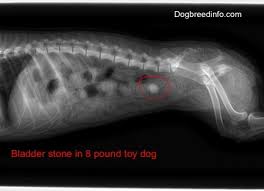Understanding Veterinary Diagnostic Tests
Sarah Blau, a member of the Class of 2017 at NC State University’s College of Veterinary Medicine, is sharing some of what she learns and experiences as a second-year veterinary student with readers of the CVM News Central Blog. Watch for these postings on a monthly basis.
I walked into the exam room to find two anxious clients passing quick glances between me and their cherished dog (who I will call “Rover” for the purpose of this blog). I understood their concern immediately—the large dog had lost about one-tenth of his body weight since I’d seen him two weeks ago, and he was staring blankly at an empty white wall. As a veterinary technician at this local small animal clinic, I was interested to learn how the veterinarian on staff would assess the situation.
The veterinarian talked with the clients, examined Rover, checked Rover’s records, and offered an informed opinion on the possible illness. Like a family physician, a veterinarian can examine a patient and—based on medical training, experience with previous cases, and knowledge of the patient—usually determine what disease condition may be present and prescribe an effective treatment. When a particularly challenging case presents itself, a veterinarian, like a family doctor, may refer the patient to a specialist. Rover’s owners were referred to the specialists at NC State’s Veterinary Hospital for more advanced medical testing to confirm the exact cause of Rover’s condition.
 Medical tests are called diagnostics. Diagnostics include everything from blood and urine tests to imaging tools like x-rays and Computerized Axial Tomography or CAT scans. A large portion of our veterinary studies focuses on how to determine what diagnostic tests are appropriate and how to administer them and read their results.
Medical tests are called diagnostics. Diagnostics include everything from blood and urine tests to imaging tools like x-rays and Computerized Axial Tomography or CAT scans. A large portion of our veterinary studies focuses on how to determine what diagnostic tests are appropriate and how to administer them and read their results.
As a veterinary student, I was able to follow the progress of Rover in the hospital. His case turned out to be quite complicated, and it was a learning experience for me. I was struck by medical staff reports that noted Rover’s owners were concerned that so many tests were done without a definitive diagnosis.
Just as in human medicine, the cause of some ailments can be identified by fairly quick and easy diagnostics. Other conditions may require more lengthy and invasive tests to determine the issue. For some unusual cases, tests may not be definitive and the specialist’s expertise combined with the ruling-out of other potential problems will lead to a presumptive diagnosis.
Veterinary students are trained in what is called evidence-based medicine. This approach to medicine involves taking account of all signs and symptoms presented by the sick patient, developing a running list of potential causes, and then choosing the best medical tests that will help to rule in or out the likely causes. We are taught to always have a purpose behind the diagnostic tests we choose.
As a long-time pet owner and veterinary client myself, I sympathize with the stresses associated with helping a sick pet. As a future veterinarian, I appreciate that there are times when medical tests will not provide an exact answer to the problem. This can be frustrating for both veterinarian and pet owner. We are learning that effective client communication helps alleviate some of this frustration if the client is kept informed on all aspects of the purpose as well as costs associated with diagnostics and treatment options.
The specialists at the NC State Veterinary Hospital prepared a treatment plan for Rover based on what they did know from diagnostic tests and the years of veterinary experience informing their ministrations. I am happy to report that as of the time of this blog, Rover is back home and improving. I know I will remember this case as a prime example of both the limitations and the strengths of veterinary diagnostics.


